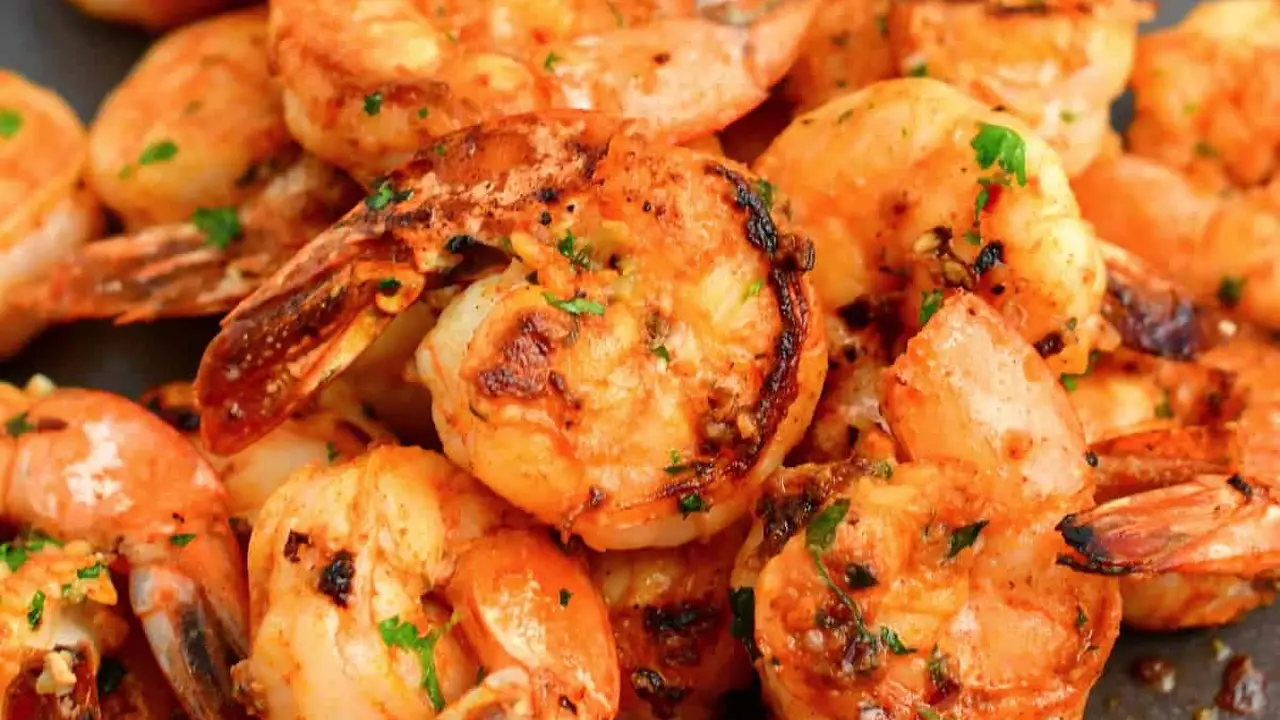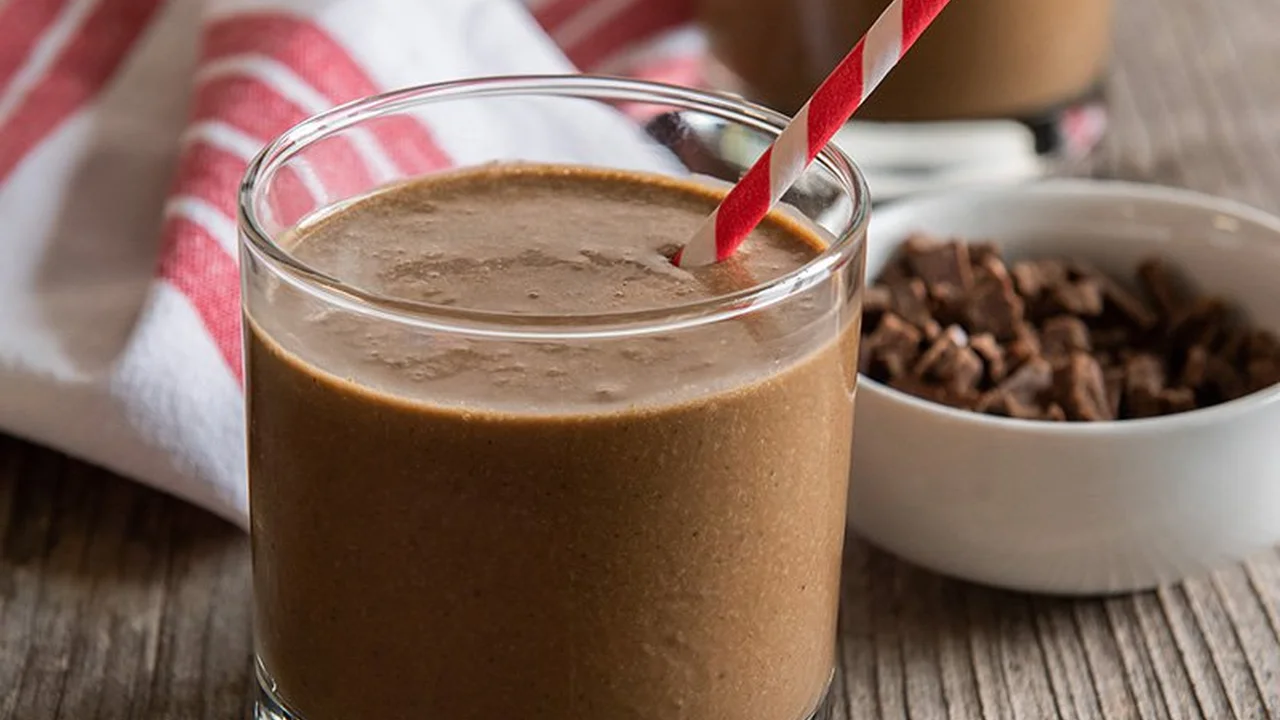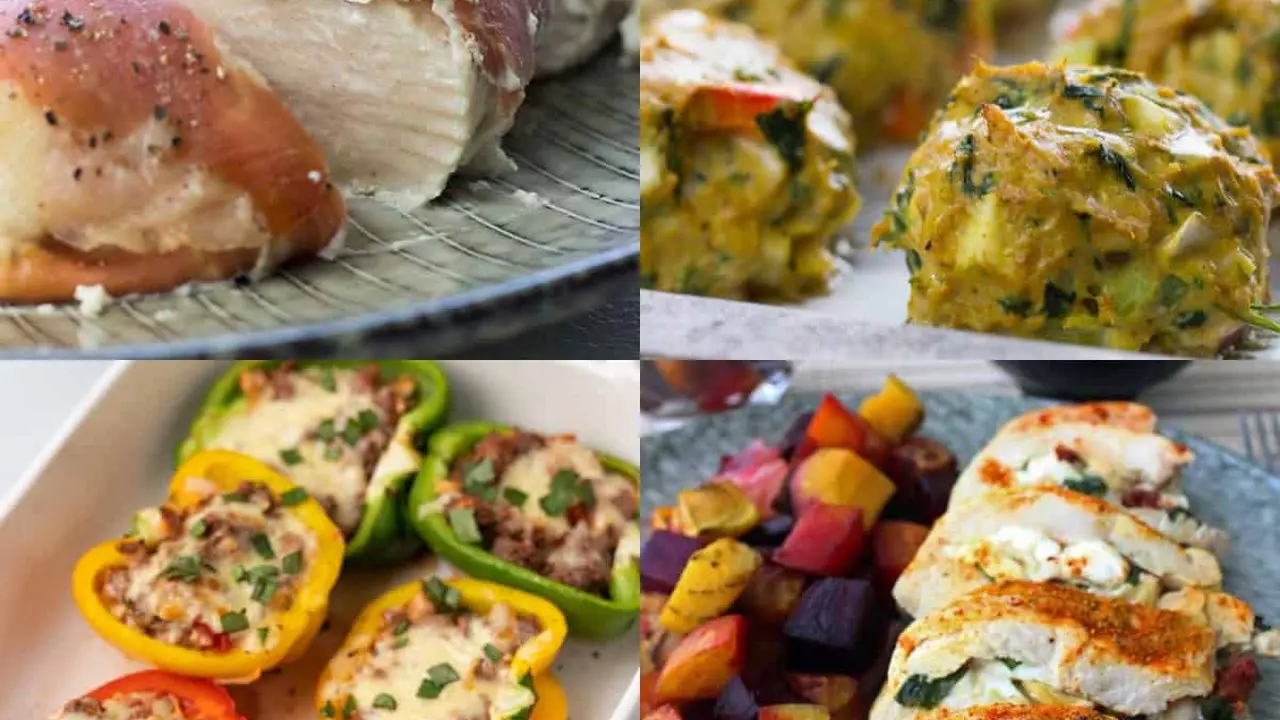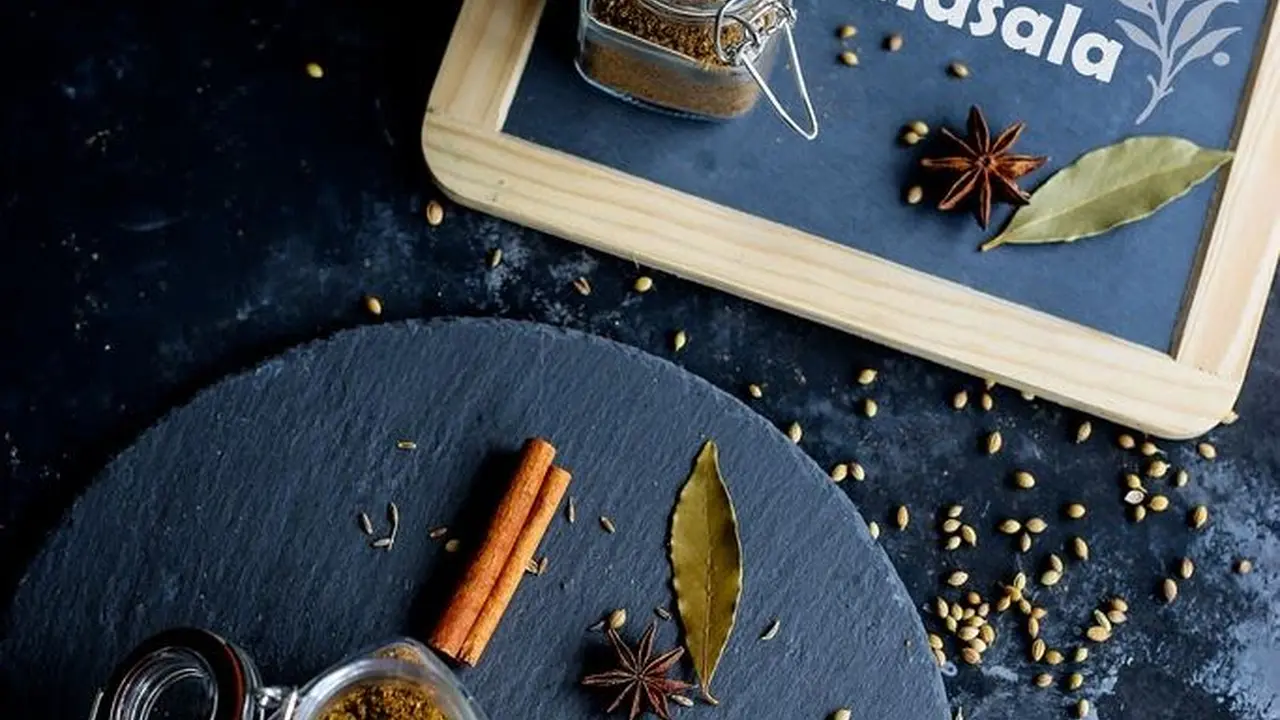7 Best Recipes for Boosting Your Immune System
Looking for vegan protein sources? These 7 recipes are packed with plant-based protein. Enjoy delicious and nutritious vegan meals that will keep you feeling full and satisfied.
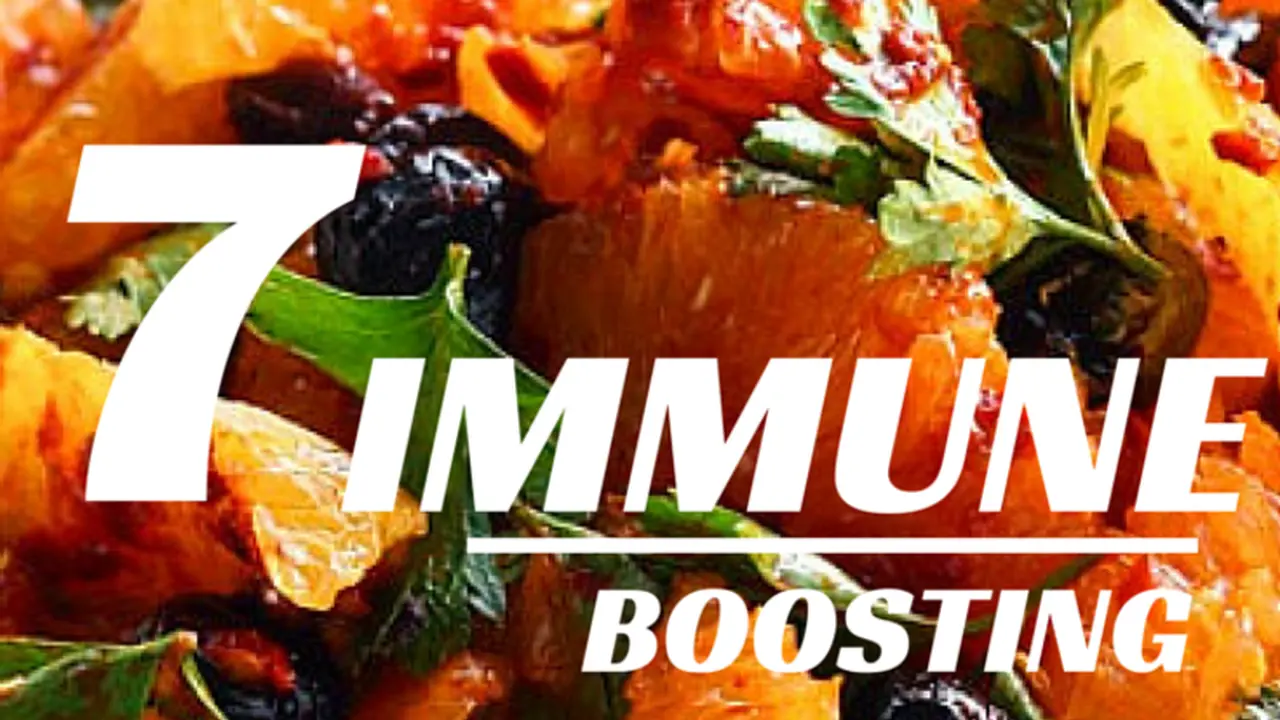
Introduction to High-Protein Vegan Eating
So, you're going vegan and worried about protein? Don't sweat it! Plant-based eating can be incredibly protein-rich. It's all about knowing where to look and how to combine ingredients. Forget the stereotypes of bland tofu and rabbit food – we're talking delicious, satisfying meals that fuel your body and taste buds. We're diving into 7 amazing vegan recipes that pack a protein punch, so you can ditch the meat without ditching your gains.
Recipe 1: Tofu Scramble with Black Beans and Veggies (Vegan Breakfast Protein)
Start your day strong with this vibrant and flavorful tofu scramble. It’s a fantastic alternative to scrambled eggs, loaded with protein from tofu and black beans. The veggies add extra nutrients and a satisfying crunch.
Ingredients:
- 1 block firm or extra-firm tofu, pressed
- 1 tbsp olive oil
- 1/2 onion, chopped
- 1/2 bell pepper, chopped
- 1/4 cup black beans, cooked
- 1/4 tsp turmeric (for color and anti-inflammatory benefits)
- Salt and pepper to taste
- Optional: Nutritional yeast for a cheesy flavor
Instructions:
- Press the tofu to remove excess water. Crumble it with your hands.
- Heat olive oil in a pan over medium heat. Sauté the onion and bell pepper until softened.
- Add the crumbled tofu, black beans, turmeric, salt, and pepper to the pan.
- Cook for about 5-7 minutes, stirring occasionally, until the tofu is heated through and slightly browned.
- Sprinkle with nutritional yeast if desired. Serve hot!
Protein Power:
This scramble boasts around 20-25 grams of protein per serving, thanks to the tofu and black beans. It’s a great way to kickstart your morning and keep you feeling full until lunchtime.
Recipe 2: Lentil Soup (Vegan Lunch Protein Source)
Lentil soup is a classic for a reason! It's hearty, comforting, and packed with protein and fiber. This recipe is easy to customize with your favorite veggies and spices.
Ingredients:
- 1 tbsp olive oil
- 1 onion, chopped
- 2 carrots, chopped
- 2 celery stalks, chopped
- 1 cup brown or green lentils, rinsed
- 6 cups vegetable broth
- 1 tsp dried thyme
- 1/2 tsp smoked paprika
- Salt and pepper to taste
- Optional: Bay leaf for added flavor
Instructions:
- Heat olive oil in a large pot over medium heat. Sauté the onion, carrots, and celery until softened.
- Add the lentils, vegetable broth, thyme, smoked paprika, salt, pepper, and bay leaf (if using) to the pot.
- Bring to a boil, then reduce heat and simmer for 20-25 minutes, or until the lentils are tender.
- Remove the bay leaf before serving. Enjoy!
Protein Power:
Each serving of this lentil soup provides around 18-20 grams of protein. It's a satisfying and nutritious lunch option that will keep you going strong all afternoon.
Recipe 3: Chickpea Curry (High Protein Vegan Dinner)
This creamy and flavorful chickpea curry is a weeknight winner. It’s packed with protein, fiber, and warming spices. Serve it with rice or naan for a complete meal.
Ingredients:
- 1 tbsp coconut oil
- 1 onion, chopped
- 2 cloves garlic, minced
- 1 inch ginger, grated
- 1 tsp ground cumin
- 1 tsp ground coriander
- 1/2 tsp turmeric
- 1/4 tsp cayenne pepper (optional)
- 1 can (15 oz) chickpeas, drained and rinsed
- 1 can (14.5 oz) diced tomatoes, undrained
- 1 can (13.5 oz) coconut milk
- Salt to taste
- Fresh cilantro for garnish
Instructions:
- Heat coconut oil in a pot over medium heat. Sauté the onion until softened.
- Add the garlic and ginger and cook for another minute until fragrant.
- Stir in the cumin, coriander, turmeric, and cayenne pepper (if using). Cook for 30 seconds.
- Add the chickpeas, diced tomatoes, and coconut milk to the pot.
- Bring to a simmer, then reduce heat and cook for 15-20 minutes, or until the sauce has thickened slightly.
- Season with salt to taste. Garnish with fresh cilantro before serving.
Protein Power:
This chickpea curry packs around 15-18 grams of protein per serving. Pair it with brown rice or quinoa for an even bigger protein boost.
Recipe 4: Black Bean Burgers (Vegan Burger Protein Recipe)
These homemade black bean burgers are a delicious and healthy alternative to traditional beef burgers. They're packed with protein, fiber, and flavor. Top them with your favorite burger fixings for a satisfying meal.
Ingredients:
- 1 tbsp olive oil
- 1/2 onion, chopped
- 1 clove garlic, minced
- 1 can (15 oz) black beans, drained and rinsed
- 1/2 cup cooked brown rice
- 1/4 cup rolled oats
- 1/4 cup chopped cilantro
- 1 tbsp chili powder
- 1 tsp cumin
- Salt and pepper to taste
Instructions:
- Heat olive oil in a pan over medium heat. Sauté the onion and garlic until softened.
- In a large bowl, mash the black beans with a fork.
- Add the sautéed onion and garlic, brown rice, rolled oats, cilantro, chili powder, cumin, salt, and pepper to the bowl.
- Mix well to combine.
- Form the mixture into patties.
- Cook the patties in a pan over medium heat for about 5-7 minutes per side, or until browned and heated through.
- Serve on buns with your favorite burger toppings.
Protein Power:
Each black bean burger provides around 15-17 grams of protein. They're a great source of fiber too, which helps keep you feeling full and satisfied.
Recipe 5: Edamame Salad (Vegan Salad Protein Option)
This edamame salad is a quick, easy, and refreshing way to get your protein fix. It’s perfect for a light lunch or a side dish.
Ingredients:
- 1 cup shelled edamame, cooked
- 1/2 cup chopped cucumber
- 1/4 cup chopped red onion
- 1/4 cup chopped bell pepper
- 2 tbsp rice vinegar
- 1 tbsp soy sauce
- 1 tsp sesame oil
- 1/2 tsp grated ginger
- Sesame seeds for garnish
Instructions:
- In a bowl, combine the edamame, cucumber, red onion, and bell pepper.
- In a small bowl, whisk together the rice vinegar, soy sauce, sesame oil, and ginger.
- Pour the dressing over the salad and toss to combine.
- Garnish with sesame seeds before serving.
Protein Power:
This edamame salad provides around 18 grams of protein per serving. It's a light and healthy way to boost your protein intake.
Recipe 6: Quinoa Bowl with Roasted Vegetables (Vegan Bowl Protein)
Quinoa bowls are incredibly versatile and easy to customize. This recipe features roasted vegetables for added flavor and nutrients. It's a great way to use up leftover veggies too!
Ingredients:
- 1 cup quinoa, cooked
- 1 cup roasted vegetables (broccoli, sweet potatoes, Brussels sprouts, etc.)
- 1/4 cup chopped avocado
- 2 tbsp tahini dressing (tahini, lemon juice, water, garlic, salt)
- Optional: Roasted chickpeas for extra protein
Instructions:
- Cook the quinoa according to package directions.
- Roast your favorite vegetables until tender.
- Assemble the bowl by placing the quinoa in the bottom, topping with roasted vegetables, avocado, and tahini dressing.
- Add roasted chickpeas if desired.
- Enjoy!
Protein Power:
This quinoa bowl provides around 15-20 grams of protein, depending on the vegetables and toppings you choose. Roasted chickpeas can add an extra 5-7 grams of protein per serving.
Recipe 7: Peanut Butter Protein Smoothie (Vegan Protein Smoothie)
This peanut butter protein smoothie is a quick and easy way to get a protein boost. It's perfect for a post-workout snack or a quick breakfast.
Ingredients:
- 1 cup plant-based milk (almond, soy, oat, etc.)
- 1 scoop vegan protein powder (peanut butter flavor is recommended)
- 1 tbsp peanut butter
- 1/2 frozen banana
- Ice cubes (optional)
Instructions:
- Combine all ingredients in a blender.
- Blend until smooth.
- Add ice cubes if desired.
- Enjoy!
Protein Power:
This peanut butter protein smoothie provides around 25-30 grams of protein, depending on the protein powder you use. It's a quick and convenient way to meet your protein needs.
Recommended Vegan Protein Products and Comparisons (Vegan Protein Supplements)
While whole foods are the best source of protein, sometimes you need a little extra help. Here are a few recommended vegan protein products:
1. PlantFusion Complete Protein
Description: A blend of pea, artichoke, sprouted amaranth, and quinoa protein. It's gluten-free, dairy-free, and soy-free.
Use Case: Perfect for smoothies, shakes, or baking.
Comparison: PlantFusion is known for its clean ingredients and good taste. It's a bit more expensive than some other options.
Price: Around $40 for a 2lb container.
2. Orgain Organic Vegan Protein Powder
Description: A blend of pea, brown rice, and chia seed protein. It's organic and comes in a variety of flavors.
Use Case: Great for smoothies, shakes, or adding to oatmeal.
Comparison: Orgain is a more budget-friendly option than PlantFusion. It can be a bit gritty for some people.
Price: Around $30 for a 2lb container.
3. Garden of Life Sport Organic Plant-Based Protein
Description: A blend of pea, navy bean, lentil bean, cranberry seed, and sunflower seed protein. It's designed for athletes and contains added BCAAs.
Use Case: Ideal for post-workout recovery.
Comparison: Garden of Life Sport is more focused on performance than general health. It's a bit higher in calories and carbohydrates.
Price: Around $45 for a 2lb container.
4. Nuzest Clean Lean Protein
Description: Made with just one ingredient: European golden peas. It's incredibly clean and easy to digest.
Use Case: Versatile and mixes well in water, smoothies, or baked goods. Excellent option for those with sensitive stomachs.
Comparison: Simpler ingredient list compared to blends; may lack some complex amino acid profiles found in multi-source proteins.
Price: Approximately $40 for a 1.1 lb container.
Understanding Protein and Veganism (Vegan Protein Facts)
Let's be real, the biggest myth about veganism is that it's hard to get enough protein. This couldn't be further from the truth! Plant-based foods are packed with protein, and with a little planning, you can easily meet your daily needs. Protein is crucial for building and repairing tissues, making enzymes and hormones, and supporting overall health. The recommended daily intake is around 0.8 grams of protein per kilogram of body weight. So, if you weigh 150 pounds (68 kilograms), you'd need about 54 grams of protein per day.
The key is to eat a variety of protein-rich plant foods, such as:
- Legumes: Lentils, beans, chickpeas, peas
- Tofu and Tempeh: Made from soybeans, these are complete proteins
- Quinoa: A complete protein grain
- Nuts and Seeds: Almonds, walnuts, chia seeds, flax seeds
- Green Vegetables: Spinach, broccoli, kale (in smaller amounts)
Maximizing Protein Absorption (Vegan Protein Tips)
Okay, you're eating all these protein-rich foods, but how do you make sure your body is actually absorbing them? Here are a few tips:
- Combine Incomplete Proteins: Some plant-based proteins are "incomplete," meaning they don't contain all nine essential amino acids. However, you can easily combine different incomplete proteins to get a complete amino acid profile. For example, pairing beans with rice or lentils with nuts.
- Soak and Sprout Legumes: Soaking and sprouting legumes can improve their digestibility and nutrient absorption.
- Chew Your Food Thoroughly: This helps break down the protein and makes it easier for your body to digest.
- Consider Digestive Enzymes: If you have trouble digesting protein, consider taking a digestive enzyme supplement.
Beyond the Recipes: Building a High-Protein Vegan Meal Plan (Vegan Meal Plan)
Now that you have some delicious recipes and tips for maximizing protein absorption, let's talk about building a complete meal plan. Here's a sample day of high-protein vegan eating:
- Breakfast: Tofu scramble with black beans and veggies (20-25 grams of protein)
- Lunch: Lentil soup with a side of whole-grain bread (18-20 grams of protein)
- Snack: Handful of almonds and a piece of fruit (6-8 grams of protein)
- Dinner: Chickpea curry with brown rice (15-18 grams of protein)
- Dessert/Evening Snack: Peanut butter protein smoothie (25-30 grams of protein)
This meal plan provides around 84-101 grams of protein, which is more than enough for most people! Remember to adjust the portion sizes and recipes to fit your individual needs and preferences. Experiment with different recipes and ingredients to find what you enjoy and what works best for your body.
Listen to Your Body (Vegan Health)
Ultimately, the best way to ensure you're getting enough protein on a vegan diet is to listen to your body. Pay attention to how you feel after eating different foods and adjust your diet accordingly. If you're feeling tired or weak, you may need to increase your protein intake. If you're experiencing digestive issues, you may need to focus on improving your digestion. Don't be afraid to experiment and find what works best for you. And remember, a well-planned vegan diet can be incredibly healthy and satisfying. So, embrace the plant-based lifestyle and enjoy all the delicious and nutritious foods it has to offer!
:max_bytes(150000):strip_icc()/277019-baked-pork-chops-with-cream-of-mushroom-soup-DDMFS-beauty-4x3-BG-7505-5762b731cf30447d9cbbbbbf387beafa.jpg)



